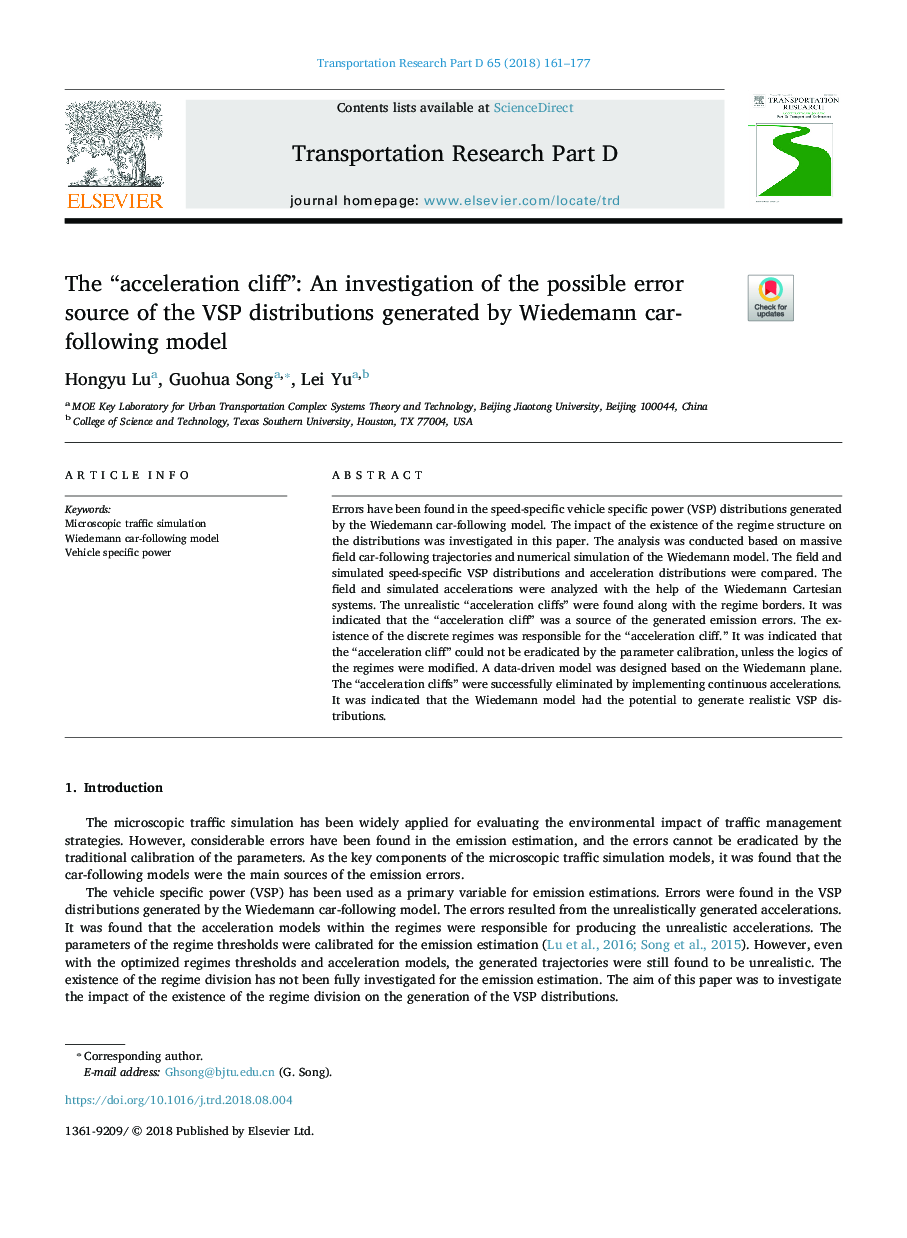| Article ID | Journal | Published Year | Pages | File Type |
|---|---|---|---|---|
| 9953261 | Transportation Research Part D: Transport and Environment | 2018 | 17 Pages |
Abstract
Errors have been found in the speed-specific vehicle specific power (VSP) distributions generated by the Wiedemann car-following model. The impact of the existence of the regime structure on the distributions was investigated in this paper. The analysis was conducted based on massive field car-following trajectories and numerical simulation of the Wiedemann model. The field and simulated speed-specific VSP distributions and acceleration distributions were compared. The field and simulated accelerations were analyzed with the help of the Wiedemann Cartesian systems. The unrealistic “acceleration cliffs” were found along with the regime borders. It was indicated that the “acceleration cliff” was a source of the generated emission errors. The existence of the discrete regimes was responsible for the “acceleration cliff.” It was indicated that the “acceleration cliff” could not be eradicated by the parameter calibration, unless the logics of the regimes were modified. A data-driven model was designed based on the Wiedemann plane. The “acceleration cliffs” were successfully eliminated by implementing continuous accelerations. It was indicated that the Wiedemann model had the potential to generate realistic VSP distributions.
Related Topics
Life Sciences
Environmental Science
Environmental Science (General)
Authors
Hongyu Lu, Guohua Song, Lei Yu,
